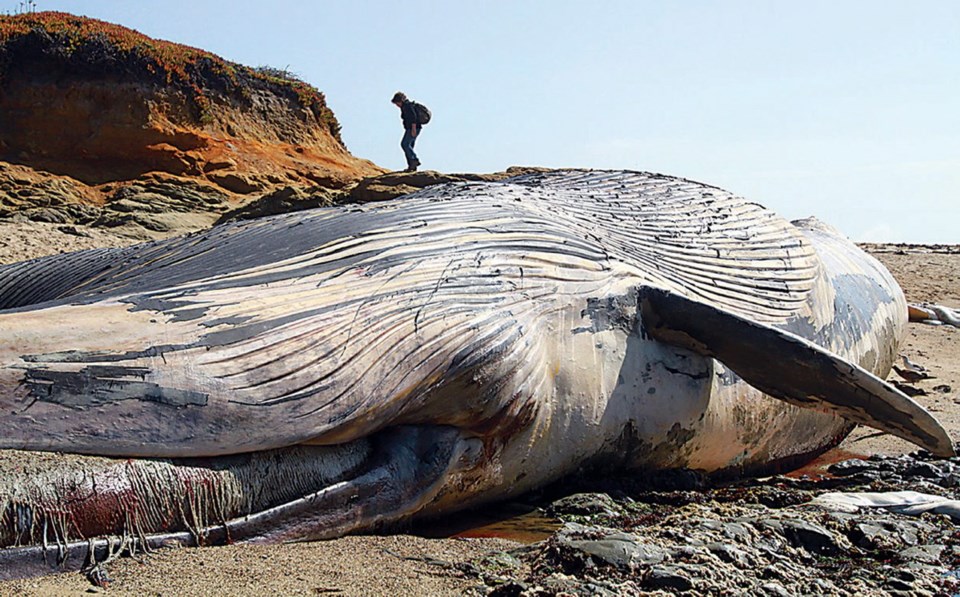You have the privilege of sharing the planet with the largest animal that ever lived on Earth.
The great blue whale, which can be found in every ocean around the globe, is bigger than any dinosaur you’ve seen in a museum.
It can weigh as much as 24 elephants, and can grow up to two school buses in length.
Its jawbone is as big as a telephone pole, its heart is the size of an oil drum, and it can consume up to two tonnes of food in a single day.
But exactly when whales became the largest animals on the planet — and why — has been a mystery. Until now.
In a paper published last week in Proceedings of the Royal Society B, a team of scientists suggests that smaller baleen whales that swam the ancient seas were uniquely positioned to take advantage of a change in the distribution of food in the ocean that occurred roughly three million years ago — but only if they grew bigger.
Baleen whales — which include great blue whales, fin whales and right whales, among others — are amazingly efficient eaters. Their favourite feast is krill, a shrimp-like animal about the size of a bumblebee that can assemble in a dense swarm hundreds of feet thick and more than a mile in length.
Hungry whales accelerate into this swarm with their enormous mouths open, eventually filtering out the water and swallowing the krill. Using this technique, the biggest whales can ingest half a million calories in a single bite.
“People like to say: ‘Oh, the biggest animals in the ocean eat the smallest animals,’ but if you ever see a blue whale eat, it’s almost like it’s taking a bite out of a super organism,” said Nick Pyenson, curator of fossil marine mammals at the Smithsonian’s National Museum of Natural History.
And yet, that hasn’t always been the case.
Pyenson’s own work measuring more than 140 fossil specimens of whales, some of which date as far back as 30 million years, showed that for most of their evolutionary history, baleen whales were much smaller than they are today — closer in size to a minivan than a bus or bigger.
It isn’t until somewhere between 3.5 million and 100,000 years ago that distantly related baleen whales all started to grow to jumbo size, and smaller whales started to die out. So, what affected this change?
Pyenson’s co-author, Graham Slater, an evolutionary biologist at the University of Chicago who did the evolutionary modelling, thought perhaps whale size was influenced by drops in ocean temperature. But after looking at fossil data in ocean sediments, the scientists ultimately concluded that whales expanded in size as a response to a change in the way their food supply was distributed in the ocean.
As Slater explained, from the time of the dinosaurs to about three million years ago nutrients were evenly distributed across the ocean. But then there is a transition, in which dense aggregations of nutrients can be found along certain coastlines, while vast parts of the open ocean are virtual marine deserts.
This change occurs because of the slow cooling of Earth that began after the dinosaurs became extinct. Eventually, this cooling leads to ice at the northern pole, which melts in summer, sending nutrients from the land into the sea. At the same time, wind patterns change so that breezes blowing off the coasts push warm, surface water toward the centre of the ocean and allow upwelling of cooler, nutrient-rich water. This promotes the primary production of plant life, which in turn feeds the krill and allows them to assemble in enormous swarms.
In this environment, it is better to be a large baleen whale than a small baleen whale for a couple of reasons. Bigger whales can take larger bites of dense krill patches. In addition, their large size allows them to keep more fat in storage to sustain them as they travel to the next krill assemblage.



